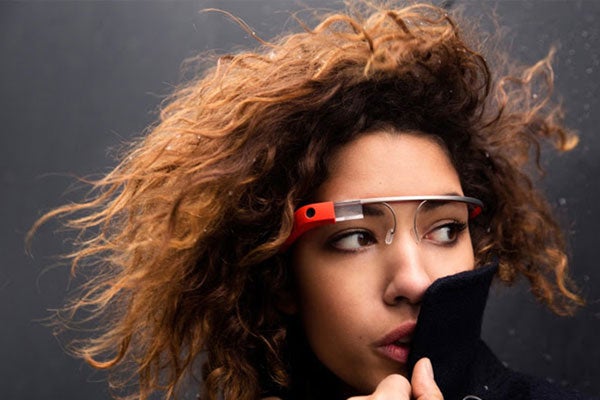The 5 lessons Apple’s AR glasses should learn from the rise and fall of Google Glass

Rumours of a pair of Apple-branded AR glasses have circulated the internet since 2017, but the concept won’t be anything new for seasoned Google fans.
With Google finally suspending support for any non-enterprise editions of Glass, it’s time to reflect on what the company did right with Google Glass and where the wearable-maker went so, so wrong.
Here are five things Apple would be smart to take from the rise (and fall) of Google Glass Explorer Edition.
Handy apps and hands-free features
Despite its downfall, Google Glass came with some pretty great features that were arguably ahead of their time. From real-time translation to a guide to your city, here are some of our top apps we’d like to see in Apple’s AR glasses.
The Word Lens app allowed users to translate anything from menus to road signs right in front of their eyes. The feature was a lifesaver for frequent business flyers and overseas travelers alike and we’d love to see this feature carried across to Apple’s glasses. While Google Lens suggests that Google isn’t ready to let go of the live translation market just yet, it would be great to see this feature on a pair of smart glasses once again.
Refresh was a feature that could give you information on a person before you met up with them. The app used your Google Calendar data along with information it collected scouring social networks to brief you on a colleague before you entered a meeting. Creepy? Yes. Good for avoiding awkward situations? Also yes.
Field Trip was a great app from Niantic Labs – best known for hugely successful AR game Pokémon GO – that essentially acted as a virtual travel companion. The app could tell users what landmarks, architecture, art and restaurants were worth checking out in any given area, along with key information, historical facts and reviews for each location.
Related: Best phone
A camera without the creep factor
One of the most prominent – and controversial – features of Google Glass was the built-in camera.
Users were able to take pictures, shoot video and make video calls from the frames, effectively preserving memories from their unique point-of-view completely hands-free.
While this may be all well and good from the user’s perspective, the public took less kindly to the prospect of being filmed.
Reports of fights started by individuals who thought they were being filmed cropped up as well as tales of Glass users being asked to leave bars and restaurants because they made their fellow patrons uncomfortable.
While Google did install a light in the glasses to indicate when the camera was active, it did little to quell the fears of those who hadn’t read the Google Glass user manual and Glass wearers were left explaining themselves every time they stepped into a public space or risk feeling ostracized.
We’d expect Apple to include a camera, but would love for the company to add a sliding cover or similar mechanism when it isn’t in use.
Practical prescription options
Despite its plethora of high tech features, Google never forgot that it was building a pair of glasses.
There’s no point in AR visuals if you can’t see them and, thankfully, Google allowed users to take their Glass to their local optician or a number of Google’s Preferred Providers to get prescription lenses fitted.
Unfortunately, this requires multiple steps and there’s no guarantee your optician won’t just be baffled by your weird high tech frames, making the whole process somewhat of a hassle.
It would be great if Apple would allow users to order prescription lenses directly from the Apple Store, whether that be online or through an in-store fitting at their nearest Apple store.
Oh, and they should be free.
Related: Best smartwatch
Be affordable – and available
If you want people to buy your AR glasses, you have to actually sell AR glasses.
One fatal flaw Google made with Glass was making the smart specs a little too exclusive to the point wherein the majority of those who received the consumer-targeted Explorer Edition were either Google developers or Twitter contest winners.
This isn’t even to mention the price. Only those with a spare $1,500 were able to get their paws on the glasses at launch. While this might not be out of the question for a good laptop or a high-end smartphone, upward of a thousand dollars is quite a bit to spend on a device you can’t guarantee you’ll get use out of every day and for an extensive period of time.
Don’t look stupid
The main factor that sets wearables apart from your standard smart tech fare is that you, well, wear them. While the tech under the hood of Apples AR glasses will certainly be important to buyers, no one wants to be called a ‘Glasshole’.
The moniker was generally used to describe someone who looks creepy or rude wearing the glasses and a lot of that came down to the physical design of the specs.
Thankfully, if there’s one thing Apple is good at, it’s selling tech as fashion. The company has a track record of making unusual head accessories mainstream (AirPods, anyone?) and we’d expect them to pull it off again with this pair of specs.
While Google’s 2019 Enterprise glasses are already less conspicuous that their sci-fi style predecessors, they’re still pretty bulky. We’d hope that Apple’s AR glasses would look a little more sleek and modern without trying too hard to appear like they’ve zapped back from 2099.
According to prolific Apple analyst Ming-Chi Kuo, the glasses will be sold as an iPhone accessory with the smartphone doing most of the heavy lifting. While this won’t be ideal for Android users, it could potentially make the frames quite a bit less bulky a lot more 2020s fashion than their competitors.


